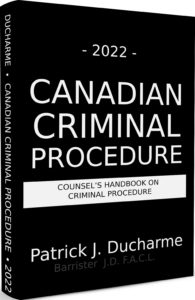
Section 810 of the Code provides that a Justice or summary court may receive an information laid by a private citizen who fears on reasonable grounds that another person will cause personal injury to him or to his spouse or common-law partner or child or will damage his property. If a Justice is satisfied by the evidence adduced that the person has reasonable grounds for his fears, the Justice may:
(a) order that the defendant enter into a recognizance, with or without sureties, to keep the peace and be of good behaviour for any period that does not exceed twelve months, and comply with such other reasonable conditions prescribed in the recognizance, including the conditions set out in subsections (3.1) and (3.2), as the court considers desirable for securing the good conduct of the defendant; or
(b) commit the defendant to prison for a term not exceeding twelve months if he or she fails or refuses to enter into the recognizance.
Section 810 aims to prevent harm but does not create an offence. A person subject to an application for a peace bond must have a full opportunity to be heard.1 The onus of proof is upon the applicant on a balance of probability. It is not a trial, it is a hearing.
The Justice also has the power to include conditions on the recognizance that prohibit the defendant from possessing any firearm, cross-bow, prohibited weapon, restricted weapon, prohibited device, ammunition, prohibited ammunition or explosive substance, or all such things, for any period specified in the recognizance, where the Justice or summary court decides that it is desirable to add such a condition.
When the Justice or summary conviction court adds a condition described in subsection (3.1) to a recognizance order, the Justice or summary conviction court shall specify in the order the manner and method by which
(a) the things referred to in that subsection that are in the possession of the accused shall be surrendered, disposed of, detained, stored or dealt with; and
(b) the authorizations, licences and registration certificates held by the person shall be surrendered.
(3.12) Where the Justice or summary conviction court does not add a condition described in subsection (3.1) to a recognizance order, the Justice or summary conviction court shall include in the record a statement of the reasons for not adding the condition.
(3.2) Before making an order under subsection (3), the Justice or the summary conviction court shall consider whether it is desirable, in the interests of the safety of the informant, or the person on whose behalf the information was laid or of that person’s spouse or common-law partner or child, as the case may be, to add either or both of the following conditions to the recognizance, namely, a condition
(a) prohibiting the defendant from being at, or within a distance specified in the recognizance from, a place specified in the recognizance where the person on whose behalf the information was laid or that person’s spouse or common-law partner or child, as the case may be, is regularly found; and
(b) prohibiting the defendant from communicating, in whole or in part, directly or indirectly, with the person on whose behalf the information was laid or that person’s spouse or common-law partner or child, as the case may be.

The above is the an excerpt of Patrick J Ducharme’s book, Canadian Criminal Procedure, available at Amazon or in bulk through MedicaLegal Publishing along with Criminal Trial Strategies.
Subscribe to Patrick Ducharme’s Youtube Channel
